
Score breakdown
Things we like
- Looks good (although not in black)
- Well-equipped
- Big improvement on the old car
- Much better package
Not so much
- Price – upfront and paint
- Heavy
- Short service intervals
- Fuel consumption (hybrid is coming)
There is finally an all-new Jeep Grand Cherokee after the previous one soldiered on for over a decade. And it really is mostly new, with a new platform, new safety and electronics package and – eventually – a choice of five- and seven-seaters with short and long wheelbases respectively. There will even be a hybrid.
But until then, you have a choice of three petrol V6-powered Grand Cherokees – the sinister-sounding Night Eagle, the boring-sounding Limited and the Toorak-wine-bar-sounding Summit Reserve.
They’ve all got a little suffix in their name too – L for long wheelbase – which means they’re all seven-seaters measuring over five metres long. If you get it in black, like the car I had, they either look like Secret Service vehicles or a high-riding hearse.
As a test of Jeep’s commitment to going upmarket, we took on the Summit Reserve, the car that sounds like it comes with a tank full of Grange Hermitage, to see if the result matches the price tag.

Pricing and features
The Summit Reserve stands at the top of the long-wheelbase Grand Cherokee range (for now at least) with an imposing $115,450 (before on-road costs) price tag, a whopping twenty-seven-and-a-half grand more than the mid-spec Limited that has the same engine and gearbox.
That’s a lot for a Grand Cherokee but not necessarily a lot for a luxury off-roader. It’s going to be interesting to see how that pans out.
Anyway, it’s properly loaded with 21-inch alloys, four-zone climate control, a 10.1-inch touchscreen, quilted leather interior, 12-way electric driver’s seat adjustment, heated and ventilated front seats, heated second-row seats, a 19-speaker sound system, heated steering wheel, auto LED headlights, and auto wipers.
The list continues with huge double-pane sunroof, digital dashboard, active noise cancellation, front/side/rear cameras, keyless entry and start, front and rear parking sensors, adaptive cruise control, massaging driver’s seat, sat-nav, power everything, open-pore wood trim and a steel 18-inch spare.
And that’s not all of it; it’s just that if I make that list any longer, Google will ignore it.

The 10.1-inch screen runs the replacement to the long-running UConnect (finally!) system of the older car – it’s much nicer to use and looks great. It also features Apple CarPlay and Android Auto as well as DAB+ digital radio.
Unfortunately, too many functions are controlled from within the screen despite there being plenty of buttons on the steering wheel. You do have to go diving for some things, which I’m never fond of doing.
The safety package is impressive, with eight airbags (the curtains go all the way to the third row) forward auto emergency braking (with cyclist and pedestrian detection), active lane-keep assist, intersection collision assist, blind-spot monitoring, rear cross-traffic alert, traffic sign recognition, tyre pressure monitoring and driver fatigue detection.

It has five top ether anchors (two in the third row, three in the middle) and three ISOFIX points in the middle row.
ANCAP is yet to asses the Grand Cherokee, likewise its North American counterpart IIHS, at the time of writing.
The only option on the Summit Reserve is paint. The only free colour is white and the other four are a mildly scary $1750. So Jeep is definitely delivering on the upmarket tag.
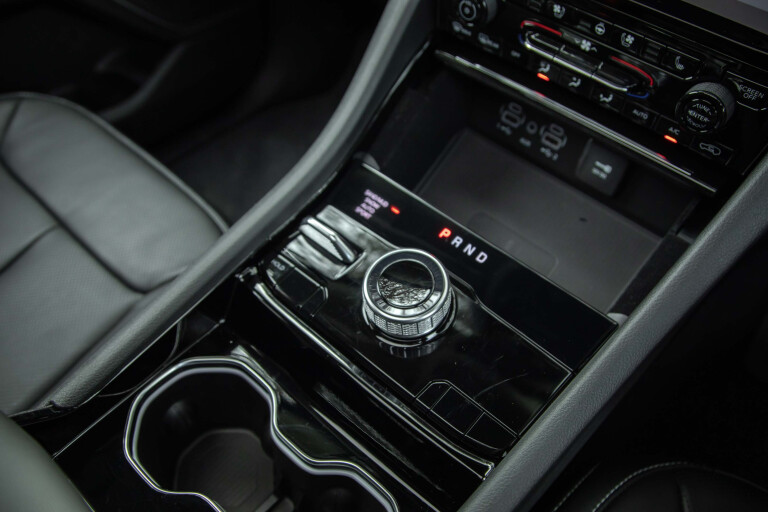
Comfort and space
It’s been a while since I drove the old Grand Cherokee, so I went and had a read of what I thought of it. I wasn’t super impressed, the car having a bitty, poorly-packaged interior, questionable ergonomics and cramped footwells for the front seat occupants.
The L sees off the poor packaging with a lot more space for occupants, including an easily-accessed third row.
The big rear doors afford excellent space for you to get the middle row tilted out of the way and then climb into the rearmost seats.
Like most third rows, this isn’t going to win any awards for space – if you want more, go with Hyundai’s gargantuan Palisade or get a Kia Carnival – but you can squeeze in someone of reasonable height with a modicum of comfort to get them to school or the footy or the shopping centre to see whichever Tik Tok star is turning up to the inexplicable delight of your kids and their friends. It also folds away quite neatly to leave you with a pretty sizeable boot.

Before you do fold it away, you start with a startling 487 litres, akin to that of a mid-sized sedan and already more than most mid-size SUVs can manage.
Fold the 50:50 split third row away and you then have a similarly astonishing 1328 litres. With the 40:20:40 split-fold middle row dropped there’s 2395 litres. These figures are approaching delivery van levels of space.
As if to underscore how ordinary the previous generation was for humans, the middle row slides back and forth to allow more cargo and/or occupant space in the rear while also bringing younger kiddies and/or animals closer to the front seat occupants.
With the 40:20:40 split-fold middle row dropped there’s 2395 litres. These figures are approaching delivery van levels of space.

The Summit Reserve also features as standard the gut-churningly saccharine Fam Cam. This allows you to check what’s going in on the second or third rows without having to turn around, with cameras in the ceiling spying on screaming toddlers or snogging teenagers.
Seriously, though. Fam Cam.
Cup holders abound, with two in each row for a total of six, although they are of varying depth and usefulness. Various trays also litter the cabin, including a wireless charging pad in the front.

The front also has a pair each of USB-A and USB-C (extremely handy), a 12-volt port and an aux-in if you’re still rocking an iPod classic or a Rio MP3 player.
Middle-row occupants have another pairing of USB-A and USB-C, as well as a 230V power socket albeit only suited to lower-powered devices.
If you’re really serious about carrying stuff, the Summit Reserve’s towing capacity is down to 2240kg from 2800kg in the lower versions owing to the standard air suspension, so keep that in mind if it matters.
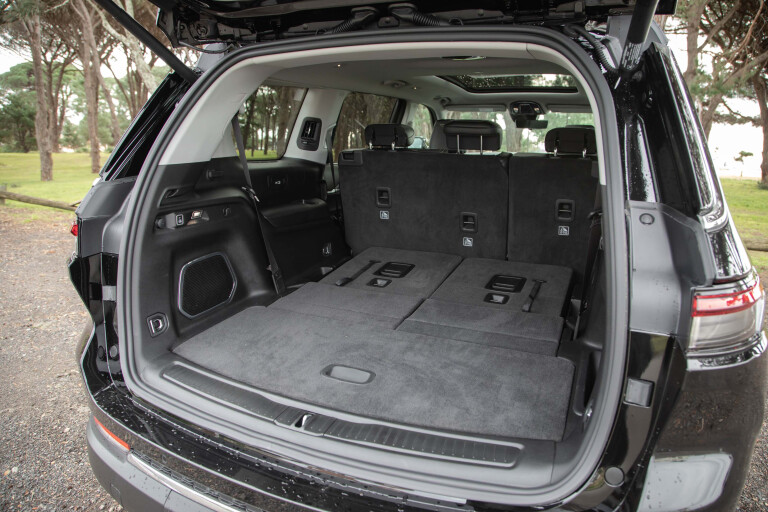
On the road
The WL Grand Cherokee – as it is known to the enthusiasts – has replaced the WK2 that traces its lineage back to the Mercedes M-Class. This new one is based on a platform shared around the giant Stellantis empire, including the American brands grouped under Chrysler.
Known as the Giorgio platform, it is much more modern and underpins the Alfa Romeo Stelvio SUV. One imagines it must be quite flexible because the Stelvio is quite a bit more compact, whereas the Jeep has room for seven seats.
There is a short wheelbase version coming (hence the L in this one’s name) and we’ll see that later in the year.
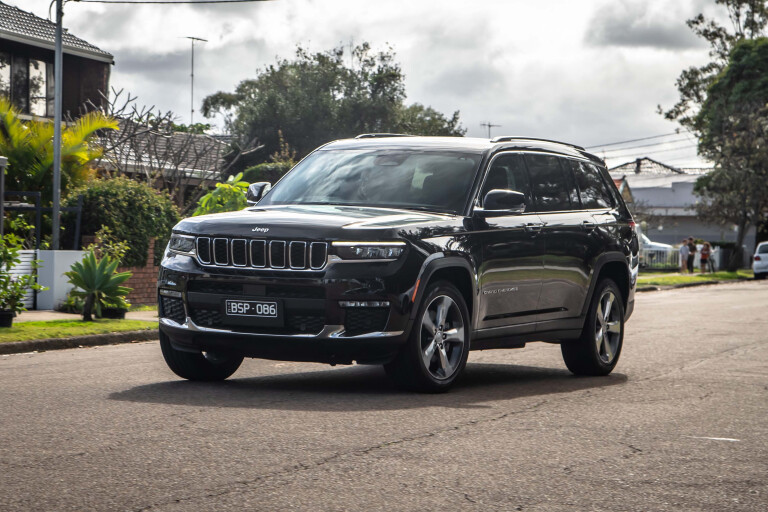
While it’s got a new platform, the 3.6-litre Pentastar V6 makes another appearance under the bonnet, with 210kW and 344Nm to shift 2270kg of bulk. That’s not a huge amount of power or torque to move what is by any measure, a chunker.
The eight-speed ZF automatic sends power to all four wheels and should send you 100km/h from rest in about nine or so seconds. It feels that quick even if the engine sounds like it’s protesting a bit as it does it.
It’s nice that Jeep has resisted the urge to put the dreaded nine-speed in the Grand Cherokee because that was never a good transmission.
What is nice – and explains some of the huge price differences between the Summit Reserve and the rest of the range – is the air suspension. It offers several modes: Normal, Off-road 1 (40mm higher), Off-road 2 (60mm higher than Normal), Park (46mm lower to aid entry and exit), and when in Sport mode, Aero drops the car 21mm to reduce drag at high speeds and lower the centre of gravity.

No, it doesn’t explain nearly thirty grand, but it’s quite useful even if it does put a dent in the towing capability to the tune of half a tonne. I’m going to take a punt and say that the Summit Reserve is probably not going to spend too much time on heavy duties, though, much like the similarly equipped cars from brands like Range Rover that Jeep seems to want to go after.
Having not driven the lower grades, all I can say is that it’s very compliant and happy around town. At a cruise, it’s very quiet and as comfortable as its price tag suggests it should be.
It always feels heavy, though, and I think that’s got a lot to do with the steering. It’s typical Jeep in that it’s fairly light to steer but the feeling fails to hide the bulk of what is a Big Unit at over five metres long. Air suspension can sometimes have that effect too, if it’s not tuned to respond quickly, which you probably don’t want in an off-roader.
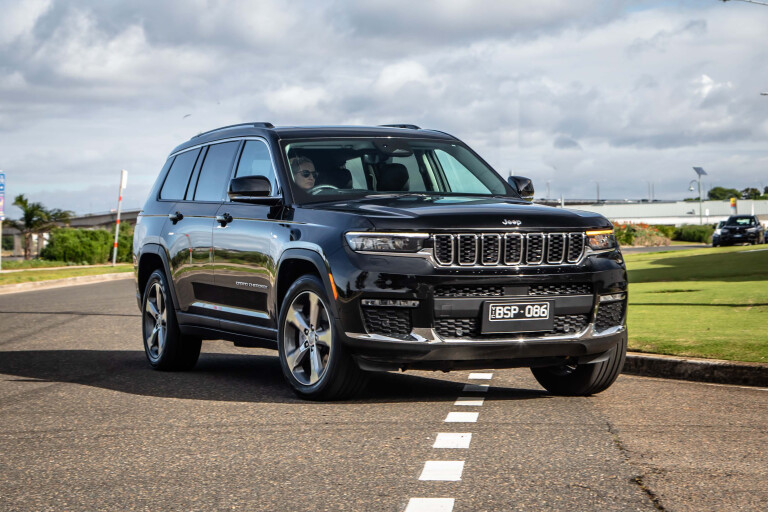
Speaking of the fact that this is a reasonably committed off-roader, the Summit Reserve also features Jeep’s heavy-duty Quadra Trac II off-road hardware.
This means you get a dual-speed transfer case to the lower models’ single-speed Selec-Trac, which by all accounts does a pretty good job anyway. I find that slightly confusing for a car fitted with 21-inch alloys and road tyres.
It has excellent brakes, too, although the pedal feel was a bit soft for my liking. The front discs are gripped by two-pot calipers, which bodes well for both road and dirt-track use. As I keep saying, it’s a heavy unit and the brakes are more than up to the job.
Speaking of the fact that this is a reasonably committed off-roader, the Summit Reserve also features Jeep’s heavy-duty Quadra Trac II off-road hardware.

There are one or two baffling own goals, though. The OK button on the steering wheel both switches the dashboard from displaying analogue dials to digital dials (press and hold) or km/h to mph (click).
I was driving up a road near my house notorious for cops hiding with radar guns for no good reason wondering why 30 felt so fast and put my foot down briefly before everything in my head calibrated. I realised I had brushed the OK button looking for the fuel economy figure (14.1L/100km, by the way) so that’s a tip for young players.
The instances where this switch needs to be close to hand seem limited to living on the US/Canada border or regularly driving between the UK and Europe. Where a car this big would be absurd.
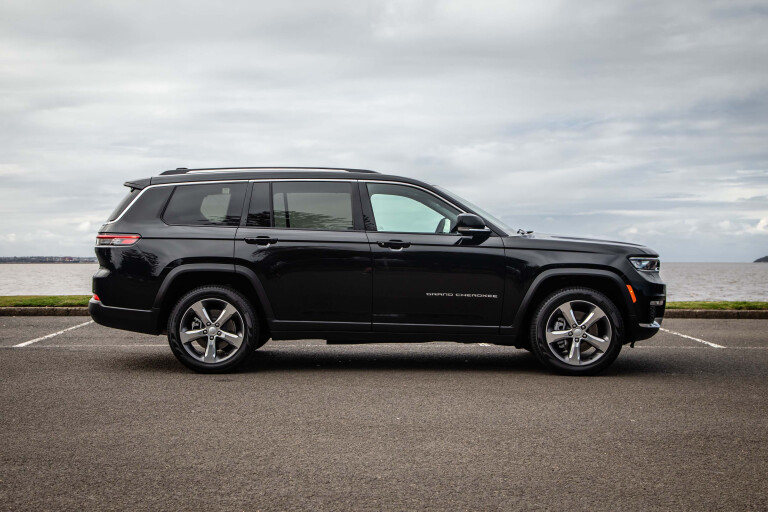
Ownership
Jeeps come with a slightly offbeat five-year, 100,000km warranty.
The five years is good – of course it is, just about everyone else is doing that, if not more – but 100,000km, well, hardly anyone is doing that anymore.
The brand's 'two-finger wave guarantee' is based on the idea that Jeep owners all lift two fingers off the wheel to say hi, which is kind of cute and basically means Jeep will dig you out of trouble with cheaper parts and roadside assistance.
Capped-price servicing holds the first five services to $399 each, which would be much better if the service intervals were not set at 12 months/10,000km. This low-kilometre interval gotcha is increasingly rare, if still not rare enough for my liking. It always feels odd to me when the servicing program runs out before the warranty.

VERDICT
The new Grand Cherokee is a much nicer car than the old one, and in this L spec, huge inside and out rather than just out. It’s better to drive, is packed full of stuff that works really well and if you’re into going off-road in a car with air suspension and 21-inch alloys, you’re going to have a blast.
Is it worth the money? That’s a big question. You can’t buy an Audi Q7 or Range Rover for this kind of money with this much gear along with the off-road chops. Most owners will, of course, restrict this shiny big machine to the occasional dirt road or towing the caravan and it will do all of that really well in comfort and relative silence.
However, it is crying out for a more advanced, torquier drivetrain and that’s surely in the pipeline. Grand Cherokee fans will love this car, I’m sure, but I don’t know if it will drag in the suburban tractor crew, rugged Jeep badge notwithstanding.
It’s a good car, though, and a sign of better, more solid things to come from the brand.

2022 Jeep Grand Cherokee L Summit Reserve specifications
| Body: | 5-door, 7-seat large SUV |
|---|---|
| Drive: | four-wheel |
| Engine: | 3.6-litre naturally-aspirated petrol V6 |
| Transmission: | 8-speed automatic |
| Power: | 210kW @ 6400rpm |
| Torque: | 344Nm @ 4000rpm |
| Fuel: | 91 RON |
| Fuel tank: | 104 litres |
| Bore stroke (mm): | 96 x 83 |
| Compression ratio: | 11.3 : 1.0 |
| 0-100km/h: | 9.0 sec (estimate) |
| Fuel consumption: | 10.6L/100km (combined) |
| Weight: | 2240kg |
| Towing capacity (unbraked/braked) | 750kg/2268kg |
| Gross vehicle mass (GVM) | 3039kg |
| Combined Gross Vehicle Mass | 5307kg |
| Suspension: | multi-link independent air (f) /multi-link air independent air (r) |
| Ground clearance | 276mm |
| L/W/H: | 5204mm/2149mm/1817mm |
| Wheelbase: | 3091mm |
| Brakes: | ventilated disc front / solid disc rear |
| Tyres: | 275/45 R21 |
| Wheels: | 21-inch alloy (space-saver spare) |
| Price: | $115,450 + on-road costs |
Score breakdown
Things we like
- Looks good (although not in black)
- Well-equipped
- Big improvement on the old car
- Much better package
Not so much
- Price – upfront and paint
- Heavy
- Short service intervals
- Fuel consumption (hybrid is coming)



COMMENTS